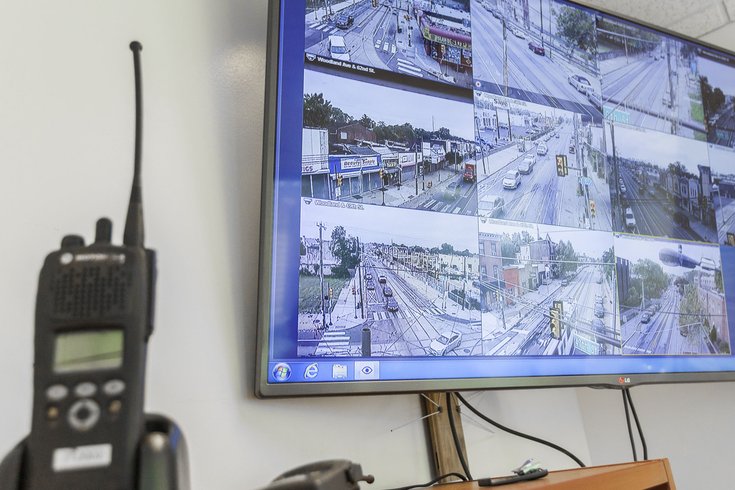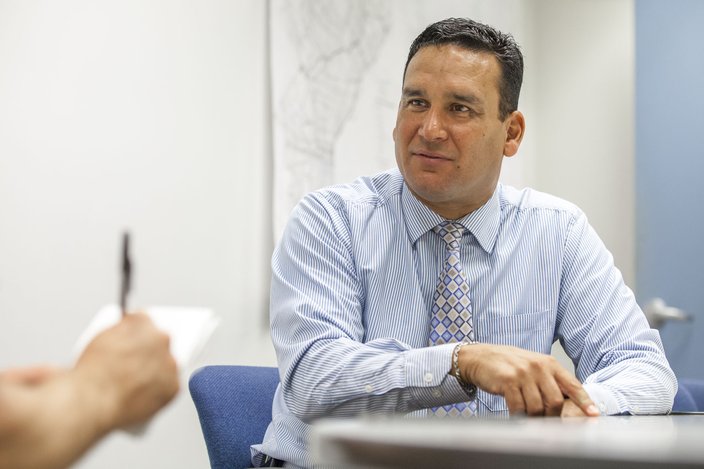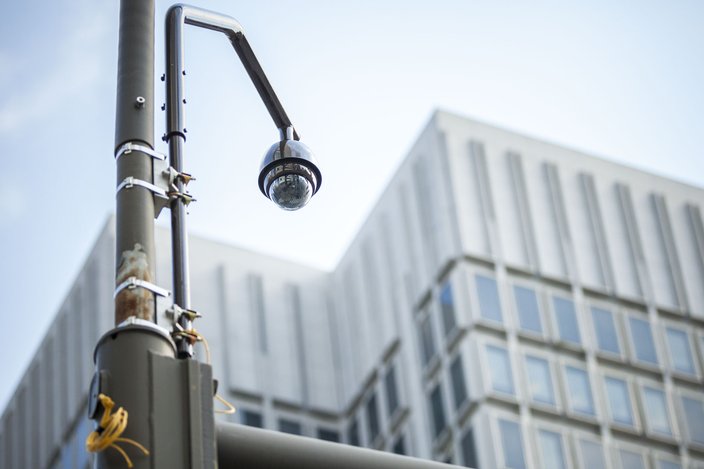
August 19, 2015
 Thom Carroll/PhillyVoice
Thom Carroll/PhillyVoice
A live camera feed monitors traffic on Woodland Avenue in Southwest Philadelphia.
Philadelphia's long-anticipated Traffic Operations Center is slated to undergo a trial launch on Labor Day weekend — three weeks before the papal visit amplifies congestion on the city's roadways.
Construction on the facility is about 70 percent complete, said Richard Montanez, the city's traffic and street lighting engineer overseeing the project. But he expects it to be ready for a trial run during the Made In America festival on Sept. 5 and 6.
"That gives us about two weeks afterward to work out any bugs we have and then be able to be fully operational by (Sept. 19) — the Friday prior to the papal visit," Montanez said. "Then we can go 16 hours a day, seven days a week. With the weekend of the pope being here, we'll be running 24 hours a day."
The Traffic Operations Center, or TOC, will house a building full of video monitors and computer terminals to enable controllers to see traffic problems in real time. Controllers can respond immediately by switching digital traffic signals remotely or sending police to the scene.
Live video streams from a network of 5,000 cameras owned by the city, PennDOT, Philadelphia police, SEPTA and other agencies will be accessible. The city is adding 49 new cameras and upgrading its network speed from one gigabyte to 10 gigabytes.
"It integrates all of the cameras that the city gets," Montanez said. "It allows us to take a look at the traffic conditions out there and adjust traffic timings accordingly."
Richard Montanez, the city's traffic and street lighting engineer, says the Traffic Operations Center will launch a trial run on Labor Day weekend. (Thom Carroll / PhillyVoice)
Philadelphia is the last major U.S. city to set up an interactive traffic operations center. The TOC, under construction in the Juniata section of North Philadelphia, will have an immediate, world-class challenge — monitoring traffic patterns during the papal visit.
As many as 1.5 million pilgrims are expected to flock to Center City for Pope Francis' visit. The two-day event will force major highway closures, a shuttered Benjamin Franklin Bridge and a "traffic box" in which only registered buses and emergency vehicles may enter.
It's a tall task.
"We're running a 5K to all of a sudden we have to run a marathon," Montanez said.
Montanez particularly anticipates congestion around SEPTA stations and along the perimeter of the "traffic box" encompassing Center City.
"We do expect a lot of people to be parking in those neighborhoods," Montanez said. "SEPTA is limited in the amount that [it] can bring in. We will see vehicular cars out there. With the road closures expected, we do expect more cars to be on our streets. ... We will be trying to monitor the situation and adjust timings as necessary."
Philadelphia police working the streets will be equipped with live video feeds so they can make quick adjustments, Montanez said.
It's all part of preparations for an event Mayor Michael Nutter has predicted will be the largest in modern Philadelphia history.
"The closest thing that everybody relates it to is the Phillies parade," Montanez said. "It's the closest we can try to compare it to and try to plan for. So, I guess it's everybody's guess as to how many people will actually show up."
To ensure the TOC is operational by the papal visit, Montanez said a nine-month construction process has been crammed into four month. Physical construction on the facility is nearly complete.
A newly-installed traffic camera hangs near the Municipal Services Building in Center City. (Thom Carroll / PhillyVoice)
The video and computer equipment is scheduled to be installed in the TOC next week. For now, Montanez essentially has a mini traffic center in his Center City office, where a single screen displayed 12 live video streams from Woodlawn Avenue in Southwest Philadelphia on Tuesday morning.
From his office, Montanez can rotate the angles of individual cameras and adjust their zoom settings. At the TOC, controllers will be able to react to the traffic patterns by remotely switching digital light signals.
"The current system we have is capable of holding up to 30 different plans," Montanez said. "All we do is change the plan. It's not like we have a button that we say we're going to do five more seconds green this time. We actually implement a different (timing). That way the progressions and everything are worked out."
The TOC is expected to reduce congestion, but Montanez said it might not feel that way to motorists. That's because the TOC's goal is to enhance the amount of traffic capable of driving on the city's major roadways, diverting traffic from neighborhood roads.
"Reducing congestion is a little misconceiving," Montanez said. "What we're trying to do is get more traffic through the same point. For example, we did a test on Broad Street where we changed the cycle lens. We're able to put more traffic through, but people say, 'You're still congested.' Well, yeah, but we just took traffic out of other areas."

